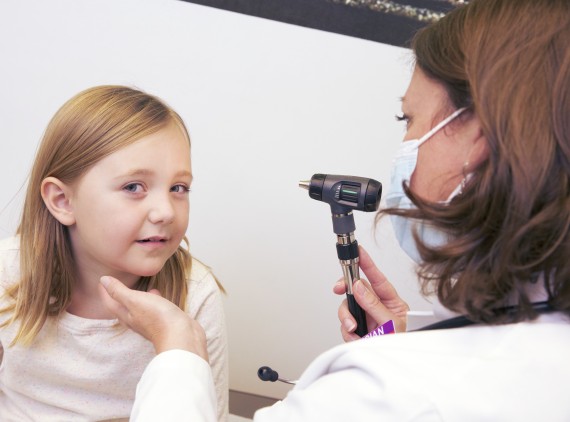Headaches impact up to 75% of children by the time they reach adolescence. The Pediatric Headache Clinic at Phoenix Children’s is working to improve the treatments available to children for migraines and headaches.
One of the country’s largest programs for pediatric headaches, the team consists of four pediatric headache neurologists, two general neurologists, and a nurse practitioner. The program continues to grow, welcoming its first pediatric headache fellow in 2022.
The clinic sees children ages 3-18 years, providing evaluation and treatment plans for their unique situations. For more complex headache patients, a psychologist will be a part of the care team to incorporate behavioral treatment options such as cognitive behavioral therapy (CBT) and biofeedback therapy into a child’s treatment plan.
CBT for migraine is a psychology-based approach to treatment that includes relaxation strategies, stress management techniques, trigger management, and improving wellness habits such as sleep, physical activity, hydration, and diet.
Biofeedback therapy uses electrical sensors to monitor factors such as heart rate, blood pressure, sweating, and muscle tension. Using the information that the sensors collect about their involuntary responses to stress, a patient can become more aware of and manage their behaviors to bring the body and mind back to baseline. Once it is learned, this practice can be used anywhere and prevent or reduce an attack.
What is a migraine?
A migraine is a type of moderate to severe headache, usually taking on a throbbing or pulsating quality. Other symptoms, such as nausea, vomiting and light and sound sensitivity are also associated with this type of headache. Routine activity can worsen symptoms, and rest and relaxation can provide some relief.
According to Reena Rastogi, MD, clinical director of the Pediatric Headache Program, children with migraines usually have a family history due to genetic factors.
“What’s happening during a migraine is that there is a change in the electrical activity in the brain and nervous system,” Dr. Rastogi explained. “That leads to changes in the nerves and blood vessels and causes inflammation.”
Making treatment accessible to children through research
Very few treatments are currently FDA approved for pediatric migraine. Although research has advanced treatment for adults and adolescents, most trials do not focus on the pediatric population. Dr. Rastogi and her team at Phoenix Children’s have set out to help change this.
Over the past year, the Pediatric Headache Program has participated in clinical research projects investigating alternative treatment options that are available to adults, but not largely studied in pediatric populations. One such study by Mary Haywood, DO, a pediatric resident at Phoenix Children’s, evaluated the use of a migraine treatment currently available only to adults, called sphenopalatine ganglion (SPG) block, in children. This treatment is used to relieve symptoms during an attack. In the study, the SPG block was used in the emergency department in children 7 years and older. The study concluded that the treatment was safe and effective in reducing pain and resulted in a shorter length of stay in the ED.
In another study by Child Neurology fellow Saher Suleman, MD, resident Clara Chow, MD, and Dr. Rastogi, the team set out to study the use of anti-CGRP monoclonal antibodies as a preventative for migraines. This treatment aims to reduce the frequency and severity of headaches over time. Preliminary results of the study showed that the use of this treatment did reduce frequency and severity, but more data is needed before it becomes available for use in children.
Although the types of treatments described above have been approved by the FDA for use in adults, they are only recently making their way to clinical trials for children. Thanks to programs doing research like this, Dr. Rastogi hopes that there will be enough data for these treatments to be approved for use in children in the near future.
“Lots of kids miss school and activities because of migraines,” shared Dr. Rastogi. “So, our goal is to help reduce them and improve their quality of life so that they can attend school and attend activities.”
The Pediatric Headache Program also works closely with Miles for Migraine, an organization that raises funds that go directly to Phoenix Children’s Pediatric Headache research and fellowship training.
To find helpful resources for migraine and headache patients and their caregivers, click here.

